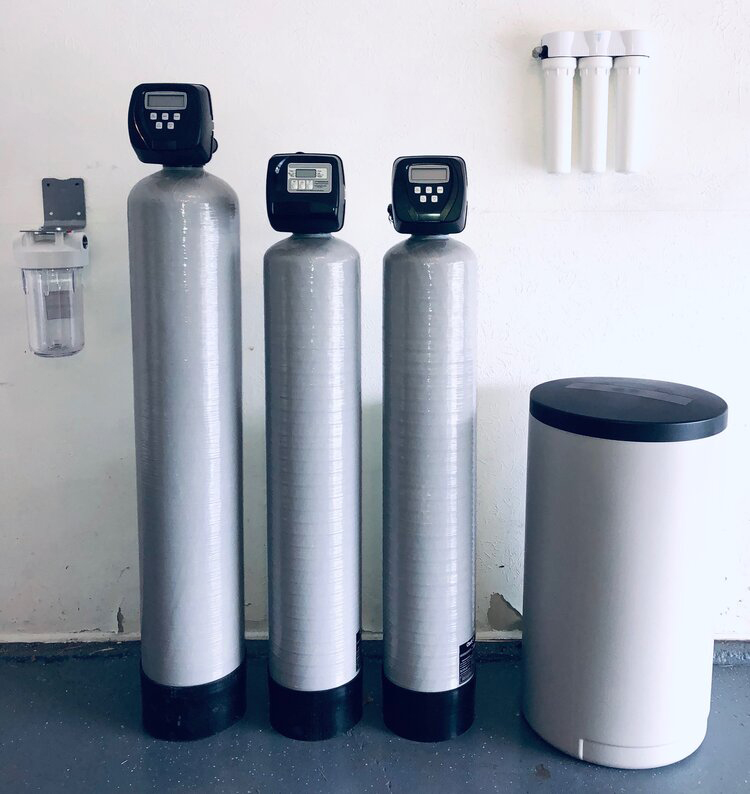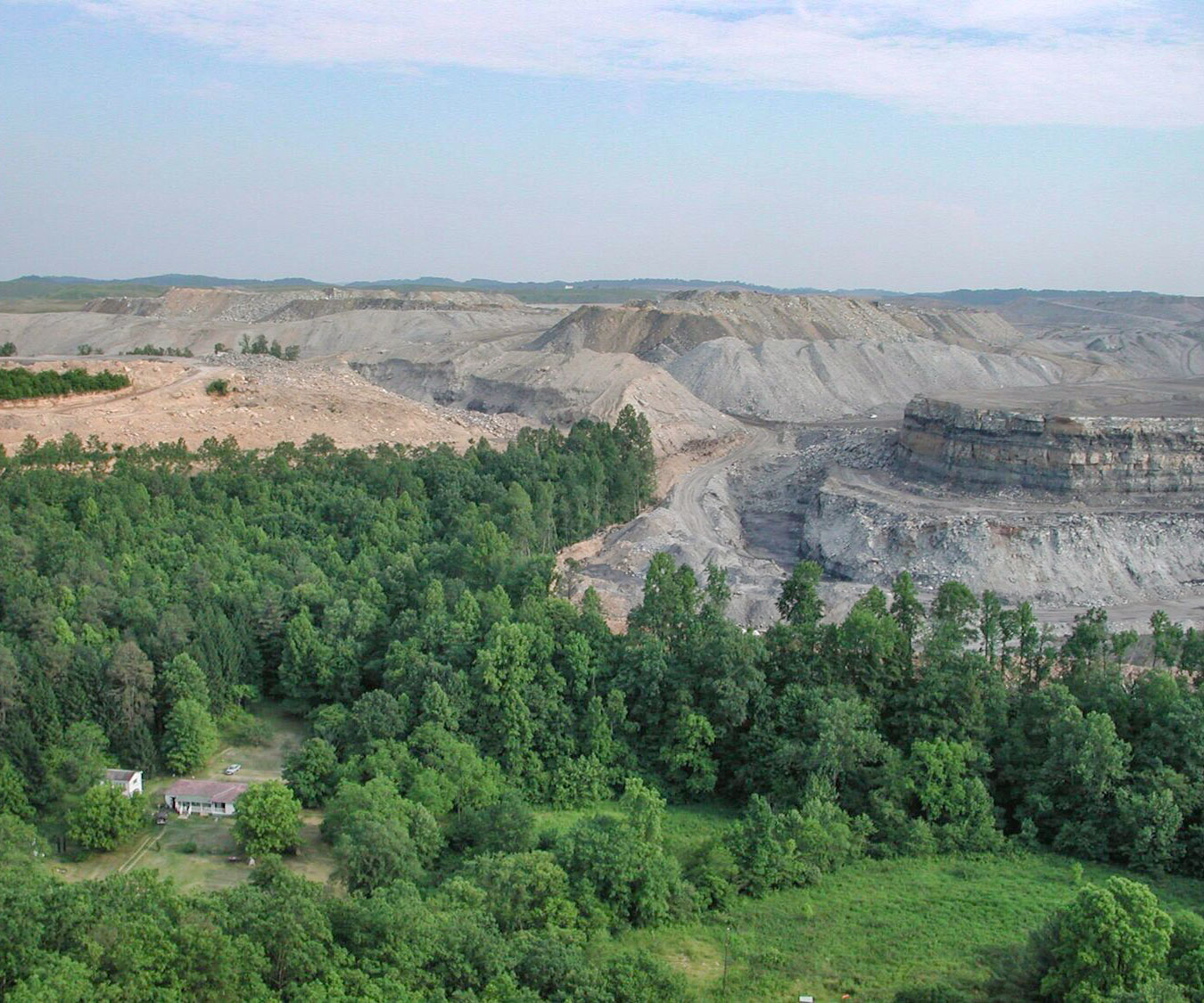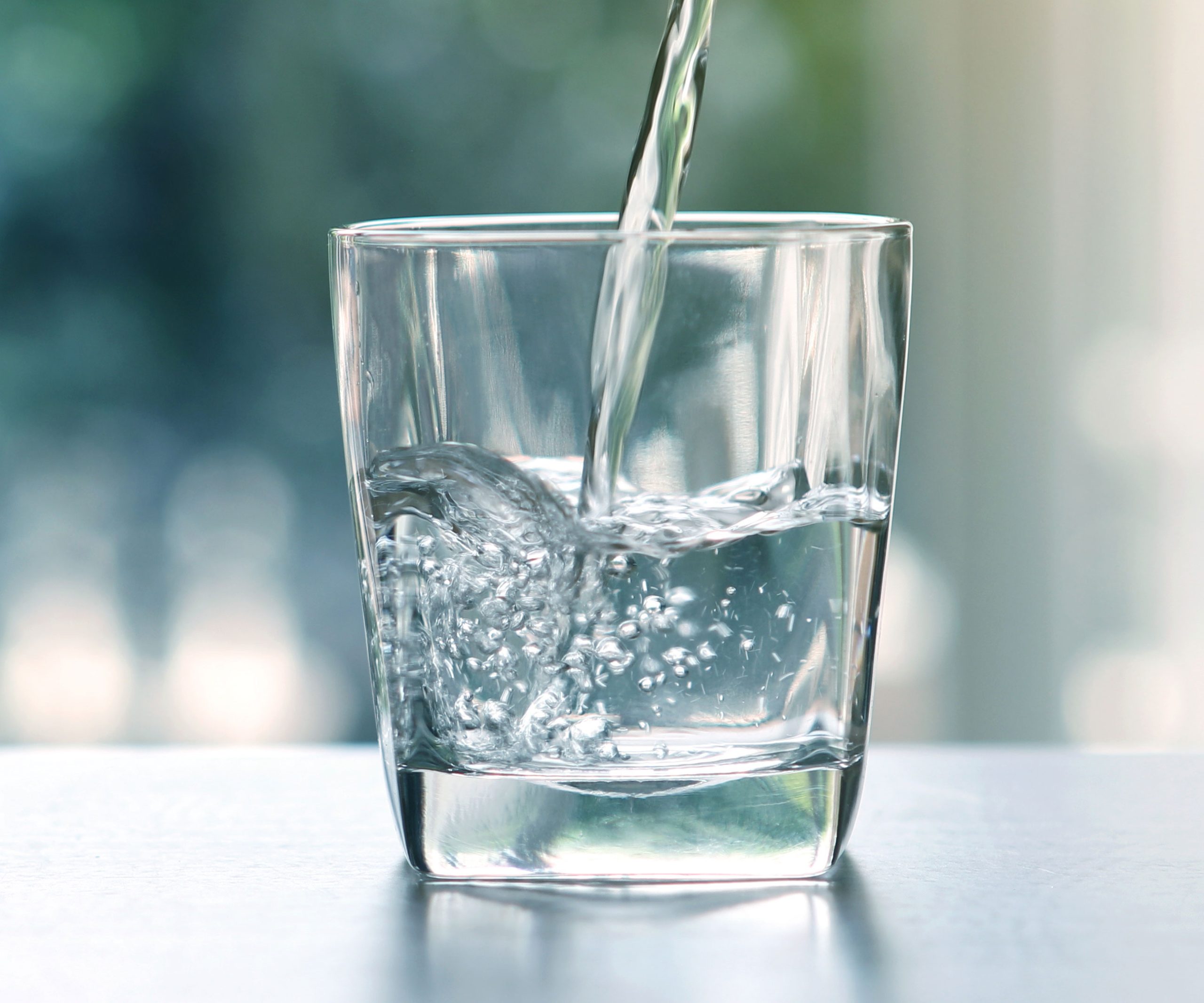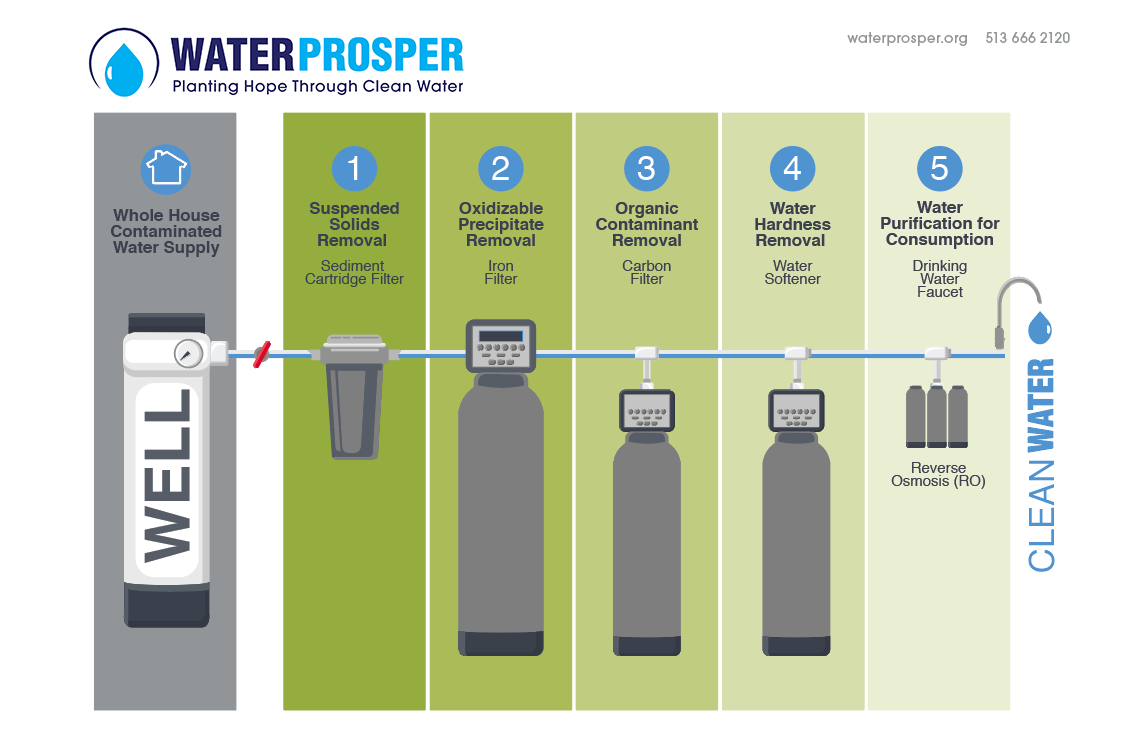WaterProsper™ Filtering System
Our Filtering System
WaterProsper’s™ purpose in providing a remedy for the contaminated well water crisis affecting hundreds, if not thousands, of families in Appalachia, begins with first identifying the contaminants, both organic and inorganic, through reliable testing.
While there are disagreements regarding the sources of the contaminants, the levels at which the contaminants pose a health risk, testing guidelines, research methodologies, pre-existing health issues related to lifestyles, and the level of culpability of the extraction activities, contamination still remains the one very real constant.
While testing of suspected well water contamination has been mainly focused on the identification of heavy inorganic metals such as lead, arsenic, and mercury, the more recent associations of gas fracking and industrial discharge with possible contamination have necessitated testing for organics, including volatile organic compounds (VOC’s), radioactives, and PFAS and PFOA. Many of these identified compounds have been found to be extremely harmful to human health at any detected level.
The various combinations of contaminants in well water pose additional filtering challenges requiring assorted filtering processes and media.


Diagnosis and Problem Solution
No single residential purification water system on the market today can remove the entire potpourri of toxic chemicals and heavy metals found in these contaminated wells. Instead, manufacturers offer systems that may remove, for instance, iron and manganese, but maybe not arsenic or lead. Organics, but not inorganics. And so on and so forth. The approaches are different, expensive, and not always thoroughly effective.
As mentioned, the list of contaminants is extensive and diverse, complicating an already complex task of creating an effective and affordable filtering solution. The best outcomes are to completely remove or, at the very least, reduce the contaminants’ presence to accepted and published EPA guidelines. Further consideration must be given to contaminant combinations and ever-changing and newly-formed compounds that lack empirical testing to determine acceptable levels of toxicity.
The entire process is complicated not only by the chemicals in the water, but the possibility that the levels of each may change from day to day, season to season, and well site to well site.
The entire process is complicated not only by the chemicals in the water, but the possibility that the levels of each may change from day to day, season to season, and well site to well site.

Striving for Safer Water
As illustrated, many of the contaminants are removed in the early filtering stages, and at that point, the water is useable for the water heater, laundry, and bathing. Although water exiting the water softening stage will most likely be safe enough to drink, a reverse osmosis (RO) unit is installed at the kitchen sink as a final precautionary filter to ensure that no trace amounts, such as arsenic III, remain. EPA Contaminates and Guidelines and World Health Organization Drinking Water Regulations.
WaterProsper™ is aware that there is no cheap, simple fix to the complex problem of heavily contaminated water, but we believe that the solution in bringing safe drinking water to an underserved and disadvantaged population, regardless of expense, is worth the extraordinary effort.
How It Works

A sediment filter is used at the inlet to the WaterProsper™ system in order to remove large debris from the inlet water stream and protect the water prosper system from fouling. This filter utilizes an exchangeable 4.5” x 10” filter cartridge that is purchased from any hardware store. This filter should be changed twice per year under normal operation, or whenever the flow through the system is significantly reduced.
Following the Pre-Filter, the first tank in the WaterProsper™ solution is an oxidizing media filter which utilizes air from the environment to react with contaminants in the water stream such as Iron and Arsenic. The reaction with air produces a particulate which is then filtered out in the sand within the filter. Periodically this unit will automatically backflush the contaminants down the drain, and recharge with air. This regeneration is performed based on a 7 day timer and should be adjusted only if the expected water usage within the home greatly increases.
Following the Oxidizing Media Filter, the second tank in the WaterProsper™ solution is an activated carbon filter which removes organics, oxidizers and foul tastes and odors from the water stream. Activated carbon has a long life and under typical residential operation the carbon bed should last 5-10 years. Periodically this unit will backflush the carbon bed to remove any debris caught on the surface of the bed, to improve performance. This unit will backflush roughly once per week. The outdoor tap should be plumbed in following the activated carbon filter to provide the best quality water for irrigation without increasing the load on the water softener.
Following the Activated Carbon Filter, the third tank in the WaterProsper™ solution is a standard sodium cycle water softener. The purpose of the water softener is to remove hardness minerals (Calcium, Magnesium and Iron) from the water to prevent buildup in the hot water heater and to protect the Drinking Water RO equipment from pre-mature fouling and failure. The water softener utilizes standard water softening salt to exchange sodium ions for hardness ions. Sodium Chloride Salt is added to the brine tank, so the system can make brine for regeneration. Salt is not added to the water when a water softener operates, rather the sodium ion is used in the softener, while the chloride is washed down the drain. The water will not be salty, however it will be higher in Sodium, so people with sodium reduced dietary requirements should ensure they drink the water from the Drinking Water RO tap, rather than softened water from the rest of the home. The softener will consume salt during its normal regeneration, and the brine tank should be kept between 1/3 and 2/3 full of salt at all times. Standard water softener salt can be purchased from any hardware store. The water flowing through this final tank is suitable for use within the home.
The RO system utilizes a membrane to filter the water to an exceptionally clean level, for the purpose of human consumption. The RO machine is designed to provide drinking water on demand, for normal cooking and drinking requirements. The RO is not designed for washing dishes, laundry or any other use. The RO utilizes pre-filter cartridges and an RO membrane cartridge. These cartridges should last 6-12 months as a minimum under normal usage. RO cartridges can be reordered from any hardware store, or by contacting WaterProsper™. Periodic filter replacements are the responsibility of the well owners. Some inexpensive filters designed to collect sediments and larger particles must be replaced more frequently while more expensive filtering media must be backwashed occasionally to maintain effectiveness. Salt pellets will need to be replenished in order for the water softener to function adequately. The carbon filter material should be effective for 5-10 years depending on water quality and usage.
The system needs at least 60psi to ‘push’ the water through the sequence of filters. One water pressure gauge is included and installed at point of entry and another after the sedimentation removal filter to ensure that the system is adequately operational. Water moving through the system at less than minimum psi will not provide optimum nor, in some cases, adequate filtering protection.
